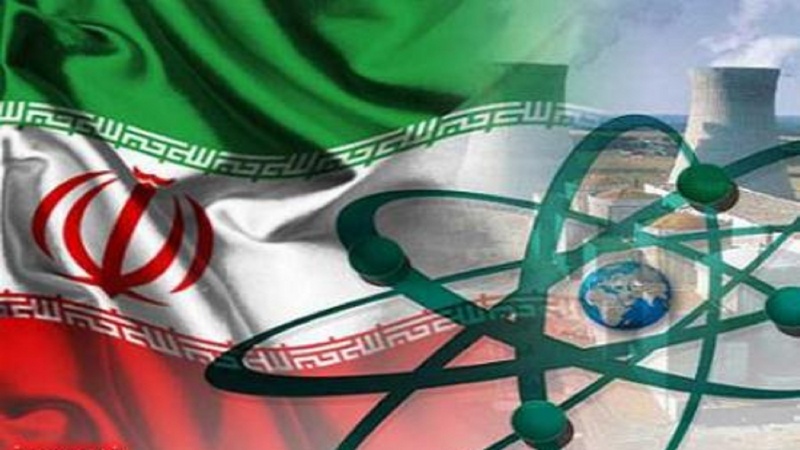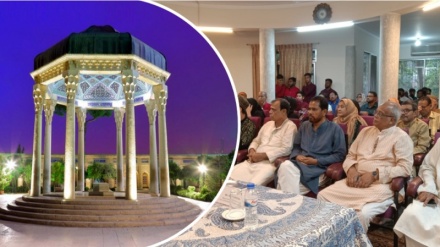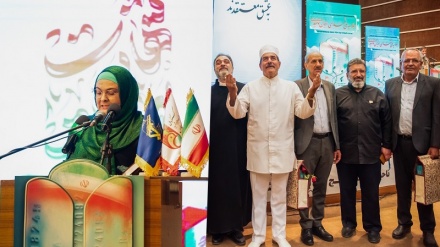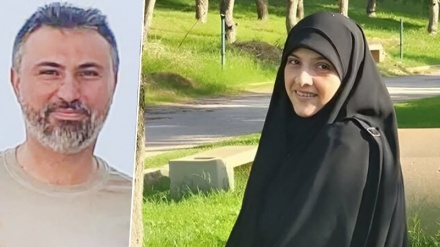Iran has lawful right to nuclear energy program
In accordance with the international treaty JCPOA (Joint Comprehensive Plan of Action), and as testified by inspectors of the Vienna-based International Atomic Energy Agency (IAEA), Iran’s uranium enrichment project is for peaceful purposes.
Stay with us for an article on the ‘Globetrotter’ site, titled “Iran has lawful right to nuclear energy program”, by Vijay Prashad, an Indian historian and journalist, who is the chief editor of LeftWord Books and the director of Tricontinental Institute for Social Research. He has written more than 20 books, including “The Darker Nations: A People’s History of the Third World”.
During the recent Non-Aligned Movement (NAM) ministerial meeting in Caracas, the capital of Venezuela, Iranian Foreign Minister Javad Zarif charged the United States with “economic terrorism.”
He was referring to the unilateral US sanctions that have clobbered Iran, which, like most countries, is reliant on the financial system that remains dominated by the US.
The United States has had a sanctions regime in place against Iran for decades, almost since the victory of Islamic Revolution in 1979. The US, France and Germany later reneged on their nuclear-energy contracts with Iran and kept billions of dollars of Iranian money. Matters sharpened in 1996, when the US administration of Bill Clinton signed the Iran-Libya Sanctions Act. Since then, the US pressure on Iran has increased, then decreased, and increased again – but it has never been withdrawn.
The United States, since 1979 but more firmly since 1996, has alleged – without any shred of evidence – Iran is trying to produce a nuclear weapon.
Iran has rejected this accusation – especially in view of the fatwa or religious edict of the Leader of the Islamic Revolution, Ayatollah Seyyed Ali Khamenei, that Islam prohibits manufacture of all weapons of mass destruction.
Iran points out that it is merely acting within what is permitted by the nuclear Non-Proliferation Treaty, which Iran signed in 1968. The NPT allows its members to develop a nuclear energy program, which includes the enrichment of uranium into fuel for nuclear reactors. Iran began its nuclear power program in 1957. The United States of America – alongside France and Germany – provided nuclear plants and fuel for the development of nuclear energy in Iran.
Article IV of the NPT clearly states that all signatories have the right to “participate in … the fullest possible exchange of equipment, materials and scientific and technological information for the peaceful uses of nuclear energy.” This includes the enrichment of uranium, at a threshold much below nuclear-weapons grade.
After victory of the Islamic Revolution, the West ended support for Iran’s nuclear energy program. Iran only restarted the program in the 1980s, but this time with limited access to technology and fuel.
It was from this period – when Iran restarted its nuclear energy program – that the United States has made the claim that Iran is not obliged to enrich uranium.
The US says that Iran’s requirement to enrich uranium – at any level – is the pathway to nuclear weaponization – an allegation that Tehran firmly rejects.
Iran says the NPT allows it to enrich uranium. Here is the real gap between the two countries. This alternative perception of what Iran is legally allowed to do is at the root of the problem.
When Iran signed the 2015 Joint Comprehensive Plan of Action (JCPOA), it agreed to freeze uranium enrichment at a low level. This was a major concession, which permitted the deal to be signed.
When President Donald Trump withdrew the US from the JCPOA, Iran argued that it was no longer obliged to freeze its uranium enrichment at 3.67%. Behrouz Kamalvandi, the spokesman for Iran’s Atomic Energy Organization, announced this July that Iran had exceeded this cap, reaching 4.5%.
In response, the US government rushed to push for new, harsh sanctions on Iran’s nuclear supply network, which includes sanctions on companies in Belgium, China and Iran. US Secretary of State Mike Pompeo accused the Iranians of being “weapons of mass destruction proliferators” – despite the regular reports of the IAEA that there is no diversion.
Though Iran has exceeded the cap placed by the JCPOA – after a two months ultimatum, a year following the US breach – it has only reached 4.5%, which is far below the 90% enrichment level needed to produce a nuclear weapon.
In 2010, Iran had offered to freeze its enrichment level at 5%, just above where it has now reached. That offer was rejected. In 2011, the Russians proposed a “step-by-step” plan, which once more proposed the 5% enrichment level as well as a comprehensive plan for transparency (including the full array of International Atomic Energy Agency surveillance) and a limitation on centrifuge research and production. This was also rejected by the United States and its European partners.
The head of Iran’s Supreme National Security Council, Ali Shamkhani, argues that the US and Iran have different views on the NPT. That treaty allows countries to enrich uranium as long as it is at a level merely for nuclear energy and not for nuclear weapons. Iran insisted that the JCPOA affirmed Iran’s right to enrich uranium.
That was “Tehran’s condition for entering the negotiations,” Shamkhani said earlier this month.
The JCPOA has the imprimatur of international law with UN Security Council resolution 2231 of 2015. That resolution says that the initial restrictions on Iran “will be followed by a gradual evolution, at a reasonable pace, of Iran’s peaceful nuclear program, including its enrichment activities, to a commercial program for exclusively peaceful purposes, consistent with international non-proliferation norms.” The full array of restrictions were to end in 2023.
Iran is a signatory of all the major treaties against weapons of mass destruction: the NPT (1968), the Biological Weapons Convention (1996), and the Chemical Weapons Convention (1997). Based on these conventions and treaties, Iran claims the right to a peaceful nuclear program. The United States denies Iran the right to develop a peaceful nuclear energy program. That is the basic problem.
The US has weaponized the NPT and the International Atomic Energy Agency to fulfill its political goals.
India, unlike Iran, is not a signatory of the NPT. India not only has a nuclear energy program, but it has a declared nuclear weapons program (having tested such weapons in 1974 and 1998). The United States has circumvented the NPT to arrange for the delivery of enriched uranium to India.
Israel has a nuclear weapons program. The United States fully backs Israel and has never called for IAEA inspections inside Israel. This shows that the US objection to Iran is not based on international law, but merely on its political objectives.
At the Caracas meeting, the mood in the Non-Aligned Movement was against the US view. The NAM has regularly affirmed Iran’s right to a peaceful nuclear energy program. Zarif pointed to the “new wave of extreme one-sided adventurism” of the United States, which, he said, is “threatening peace and stability all around the world.” Iran’s “peaceful nuclear program,” Zarif said, is being disallowed by the United States, which has breached the JCPOA and violated the UN Security Council resolution.
There is no exit here. The United States, however isolated, refuses to accept that Iran has the right – under international law – to a nuclear energy program (which includes enrichment).
As long as the US holds this view, and as long as the other countries sit back and allow the US to throw its weight around, there will be no solution to the standoff around Iran.
AS/SS



